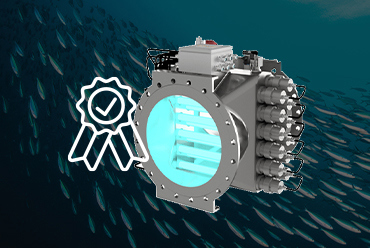
November 2025

April 2014
As the ratification of the IMO ballast water convention is getting close shipowners spend time and resources to evaluate the many different ballast water treatment systems (BWTS) on the market in order to select one, or perhaps shortlist a few, that they would want to install on their fleet. However, as owners and their consultants embark on this task they often discover that it is very complex. There are many IMO type approved systems on the market (42 were reported on the latest IMO MEPC 66 meeting) and they are often based on significantly different technologies each with their own advantages and limitations. Moreover, the systems are to be installed on different types of vessels with various operational profiles, and therefore the combined matrix of vessel/operator requirements and BWTS features/limitations is complex.
The issue concerning limitations of BWTS is critical, but also particularly complicated due to lack of information from many equipment providers. It should be acknowledged that ALL BWTS have limitations. Typically, chemical systems (e.g. electro-chlorination) have limitations related to the salinity of the water to be treated, its temperature or the amount of organic material contained therein, whereas UV-based BWTS have limitations with regards to the UV-Transmission of the water to be treated. In other words, this means that all BWTS have special circumstances under which they cannot be expected to treat the water according to the IMO discharge standard. The trick for the ship owner then becomes to select a BWTS that will work under normal operational conditions. However, this choice is currently difficult to make due to lack of information from makers of BWTS, and consequently lack of transparency.
Recently the International Chamber of Shipping (ICS) and others have called on IMO to re-open the guidelines for how to type approve a ballast water treatment system. The claim is that the current procedures are not robust enough, and that consequently several type approved systems on the market are not capable of meeting the IMO discharge standards in real life conditions. While ICS and others are right in this claim, the solution is not to re-open and re-write the IMO testing guidelines. This will still not change the fact that ALL BWTS have limitations. In fact, the issue pointed out by ICS is the same as the issue mentioned above regarding lack of information regarding limitations of type approved BWTS. The simple solution to this issue is therefore to provide information and clarity regarding the limitations of the type approved systems.
For reasons of explanation let’s look at some examples of limitations of UV-based systems with regards to the UV-Transmission (UV-T) of the water to be treated. UV-T is a measure of the capability of UV light to penetrate into the water. When the UV-T is high, close to 100%, it means the water is very clear and that the UV light can penetrate deep into the water. On the other hand, when the UV-T is low (below 50%) it means the water is very un-clear and that the UV light only can penetrate a limited distance into the water. In below Table some typical measured values of UV-T from various harbors is shown.
| Port | UV-T |
| Shanghai, China* | 49 |
| Vera Cruz, Mexico | 94 |
| Houston, USA | 74 |
| New Orleans, USA | 54 |
| Shanghai, China* | 55 |
| Hong Kong, China | 80 |
| Antwerp, Belgium | 66 |
| Rotterdam, Netherlands | 93 |
*Measured on two different days and two different locations in Shanghai port
In below figure the UV-T limitations of some UV-based BWTS are shown. These are some of the relatively few system manufacturers who have actually stated what their limitations are.

From this simple example it becomes clear that whereas the actual UV-T values in real operation often is in the range from 100 - 50%, and lower in some extreme cases, several type approved systems on the market will not be able to cope with this. The difference in performance can be significant. Whereas DESMI Ocean Guard’s RayClean system can treat water with UV-T anywhere between 100 – 33%, other systems are limited to e.g. UV-T range of only 100 – 86%.
While ICS and others are right that some type approved systems on the market will not be able to meet the IMO discharge standards under normal operating conditions, we believe the solution is not to change the entire type approval procedure. Rather, the solution should be to create a clear overview of the limitation of all type approved BWTS. This could be a task for the IMO. With such an overview ship owners can gain confidence that they can make the right selection of BWTS for their fleet, both in relation to cost, footprint power consumption etc., but also, and perhaps more importantly, with regards to the performance of the systems.
In the meantime ship owners should demand suppliers of BWTS to clearly inform and document what the limitations of their systems are. If this information for one reason or another is not available or cannot be disclosed, the shipowner should be aware of, and carefully consider, the risk associated with installing such a system on his vessel.


November 2025

October 2025

October 2025

September 2025